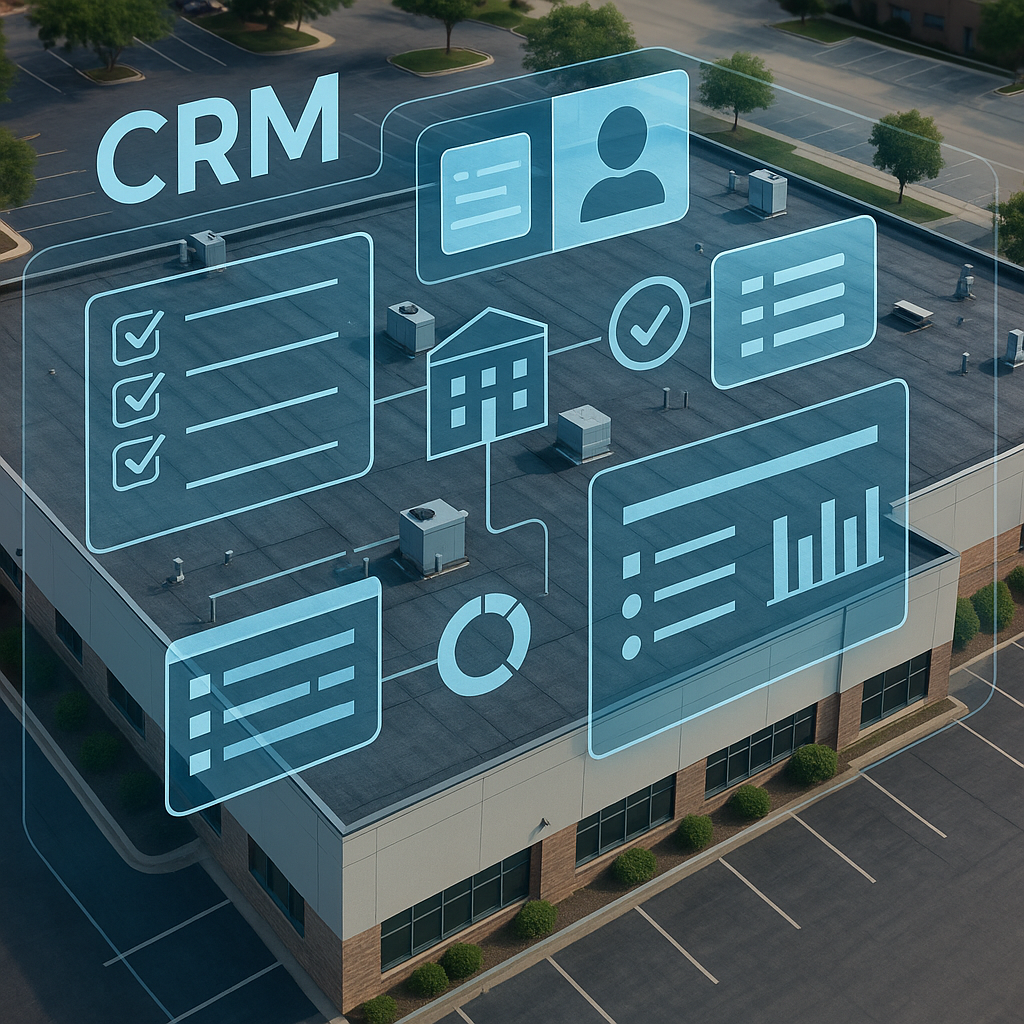For roofing companies, creating a data-driven sales strategy can be a powerful way to increase efficiency, target valuable clients, and grow revenue. Data insights allow contractors to make informed decisions about which leads to pursue, how to structure proposals, and how to tailor offerings to client needs. Here’s how to implement a data-driven approach in your roofing business.
-
Gather and Centralize Customer Data
 The first step is to establish a system for collecting and organizing data on prospects, clients, and project outcomes. This data should be housed in a centralized CRM, which will allow your team to access and update information in real-time. Track key metrics like lead sources, industry types, project timelines, and average sales cycle length. By centralizing data, you can ensure consistency across the team and identify patterns in sales successes and obstacles.
The first step is to establish a system for collecting and organizing data on prospects, clients, and project outcomes. This data should be housed in a centralized CRM, which will allow your team to access and update information in real-time. Track key metrics like lead sources, industry types, project timelines, and average sales cycle length. By centralizing data, you can ensure consistency across the team and identify patterns in sales successes and obstacles.
-
Use Analytics to Identify High-Value Client Profiles
Analyze your CRM data to create profiles of your most valuable clients. This may include industry sectors (e.g., commercial properties, schools, or government facilities) or project types (e.g., maintenance vs. full reroofing). Review data on factors like project profitability, the likelihood of repeat business, and payment timeliness. With this information, you can focus your sales efforts on clients who are most likely to generate long-term value, maximizing both efficiency and profitability.
-
Leverage Lead Scoring for Targeted Outreach
 Lead scoring involves assigning a value to each lead based on specific criteria, such as the client’s industry, project scope, or budget. Create a scoring system within your CRM that allows you to prioritize leads likely to convert and to fit well with your service offerings. High scores could be assigned to leads with high projected budgets or clients in high-value industries. A structured lead scoring process can help sales teams focus on pursuing the most promising leads, reducing time spent on low-probability prospects.
Lead scoring involves assigning a value to each lead based on specific criteria, such as the client’s industry, project scope, or budget. Create a scoring system within your CRM that allows you to prioritize leads likely to convert and to fit well with your service offerings. High scores could be assigned to leads with high projected budgets or clients in high-value industries. A structured lead scoring process can help sales teams focus on pursuing the most promising leads, reducing time spent on low-probability prospects.
-
Implement Predictive Analytics to Forecast Sales
Predictive analytics can help your team anticipate sales cycles and client needs based on historical data. For example, if your data shows an increase in maintenance requests at certain times of the year, you can proactively contact clients about preventative services during those months. Additionally, data-driven forecasting helps manage cash flow by predicting monthly or quarterly revenue, allowing for better financial planning.
-
Personalize Proposals with Data Insights
Data-driven insights enable roofing companies to customize proposals to client needs, increasing the chance of a successful close. For example, if your data shows that clients in a particular industry prefer long-term maintenance plans, adjust your proposals accordingly. Include tailored options, such as extended warranties or priority service agreements, that align with each client’s historical preferences. Personalizing proposals based on data not only demonstrates your knowledge of the client’s unique needs but also differentiates you from competitors.
-
Measure and Refine Your Strategy with Key Performance Indicators (KPIs)
 To continually improve your sales strategy, measure KPIs such as proposal win rates, average deal size, customer acquisition cost, and lead response time. Analyzing these metrics on a monthly or quarterly basis will help you understand which tactics are driving sales and where adjustments are needed. For example, if response time is low, implement automated follow-ups to keep leads engaged. Consistent tracking and refinement based on KPIs ensure that your strategy evolves in alignment with market trends and client expectations.
To continually improve your sales strategy, measure KPIs such as proposal win rates, average deal size, customer acquisition cost, and lead response time. Analyzing these metrics on a monthly or quarterly basis will help you understand which tactics are driving sales and where adjustments are needed. For example, if response time is low, implement automated follow-ups to keep leads engaged. Consistent tracking and refinement based on KPIs ensure that your strategy evolves in alignment with market trends and client expectations.
A data-driven sales strategy empowers roofing companies to optimize resources, focus on high-value clients, and refine proposals to better meet client needs. By leveraging CRM systems, predictive analytics, and personalized proposals, you can increase sales efficiency, maximize revenue, and position your company as a client-focused industry leader.




